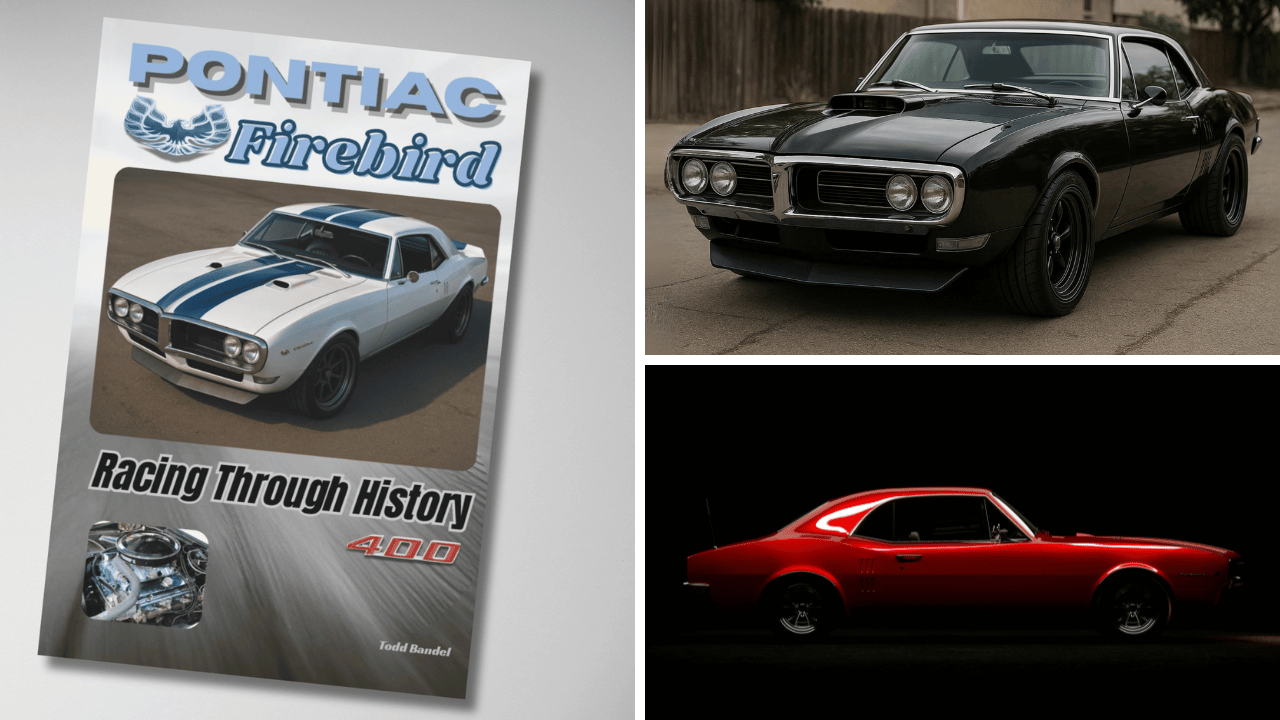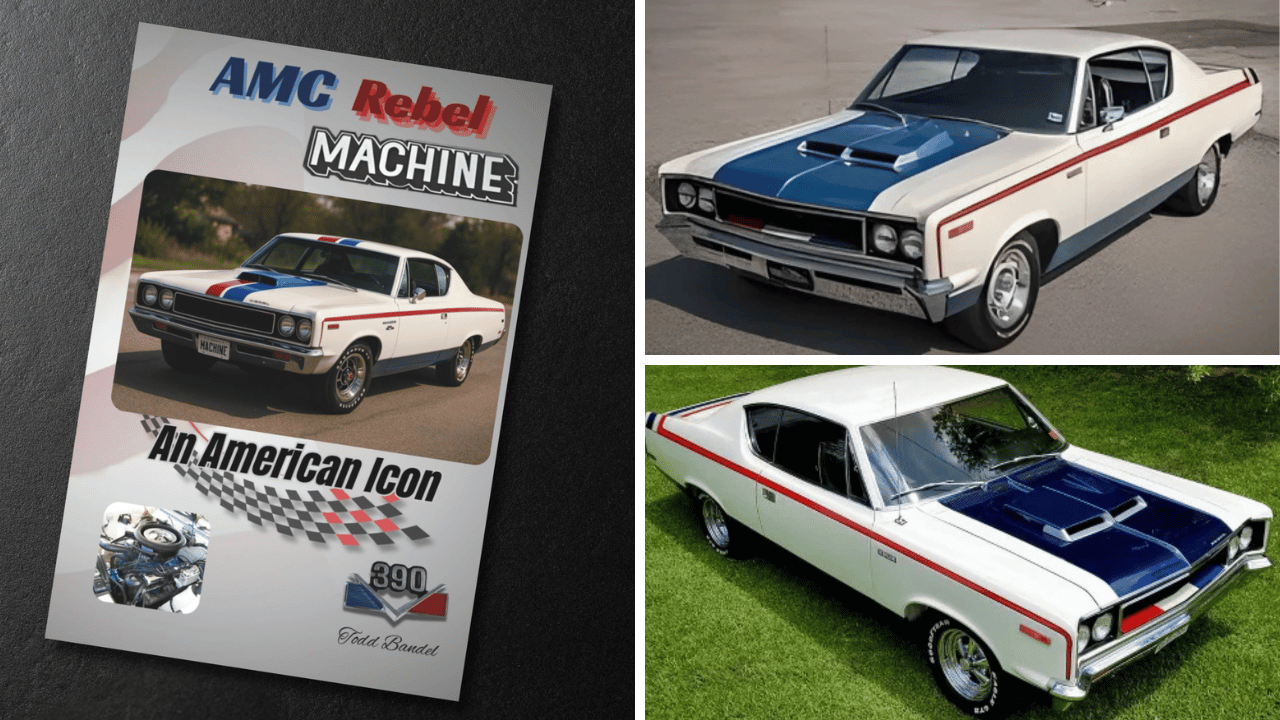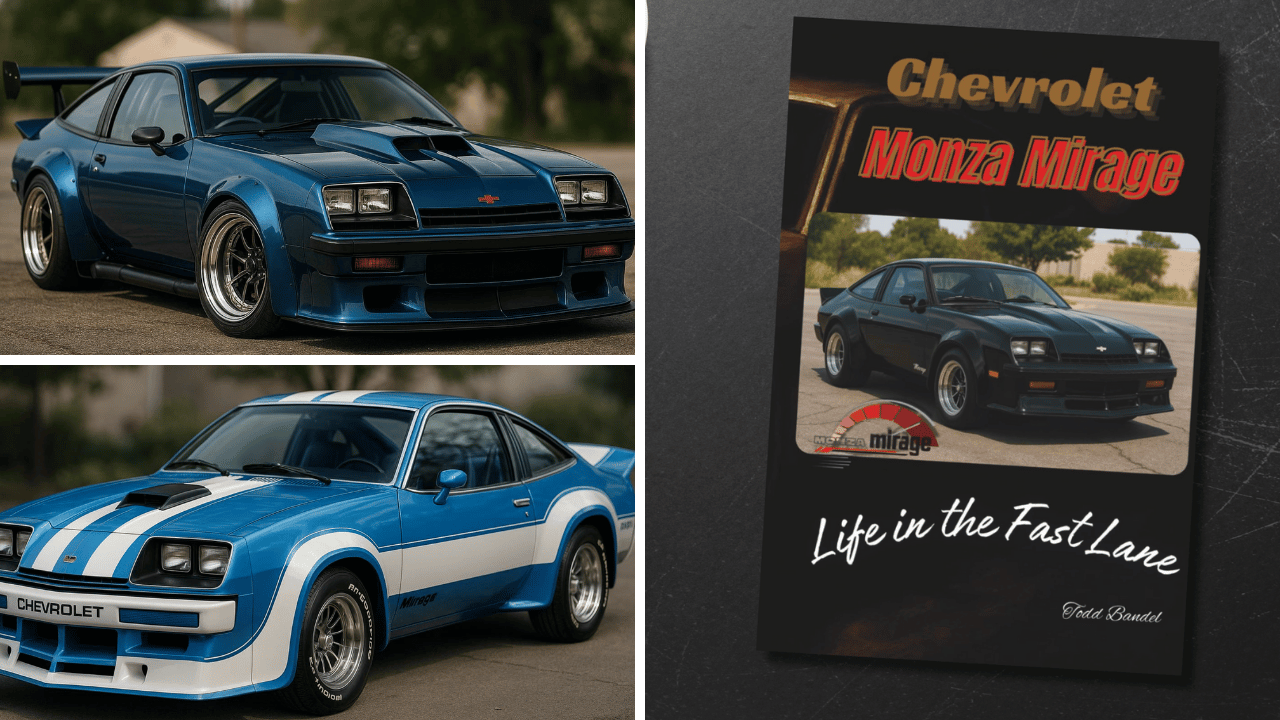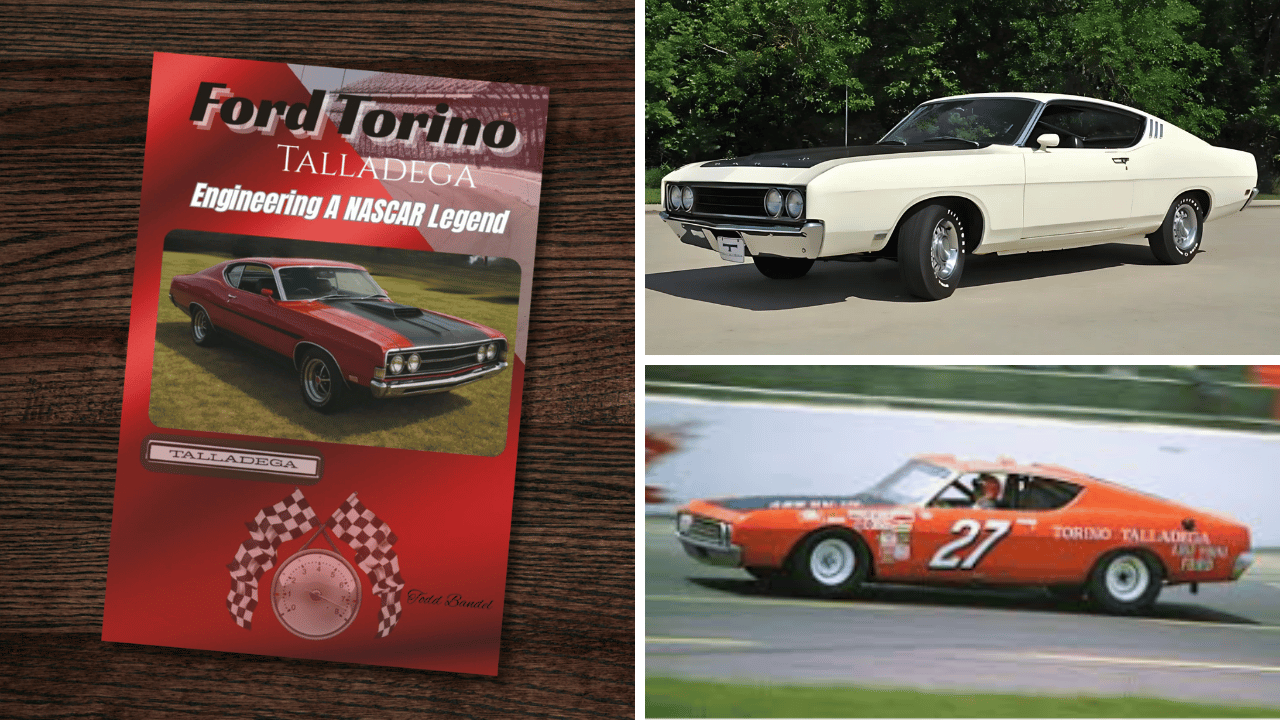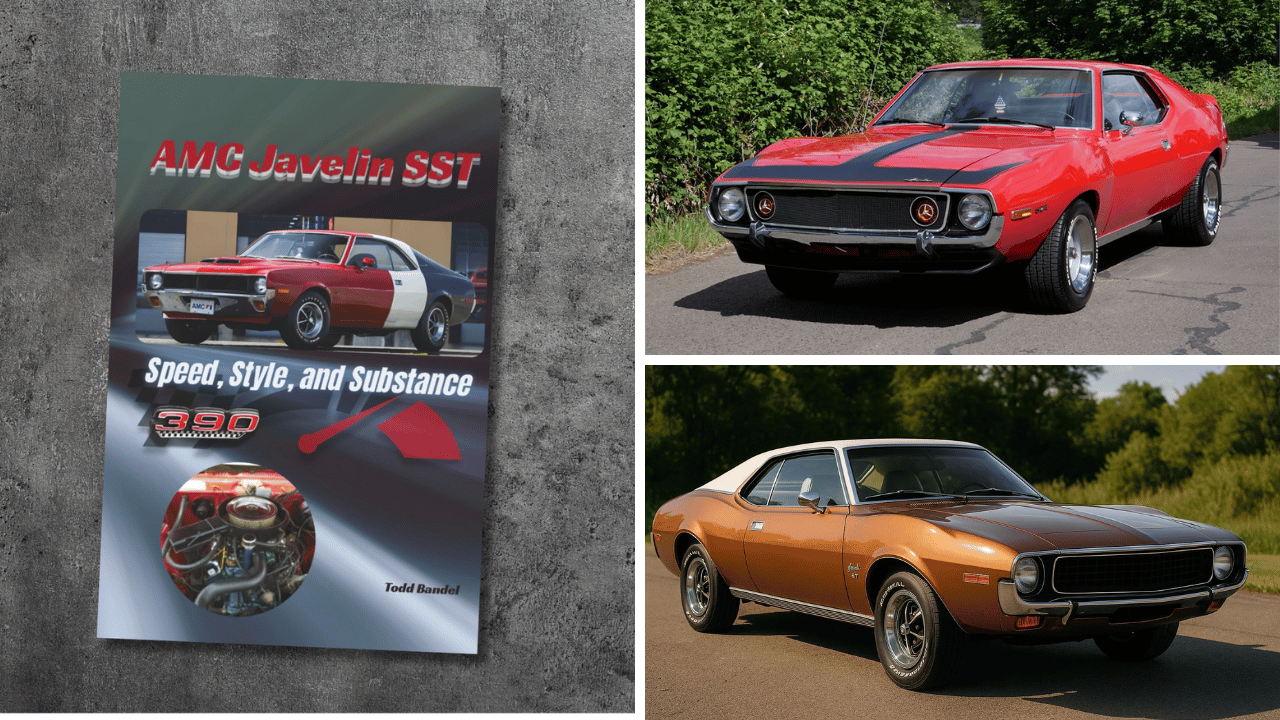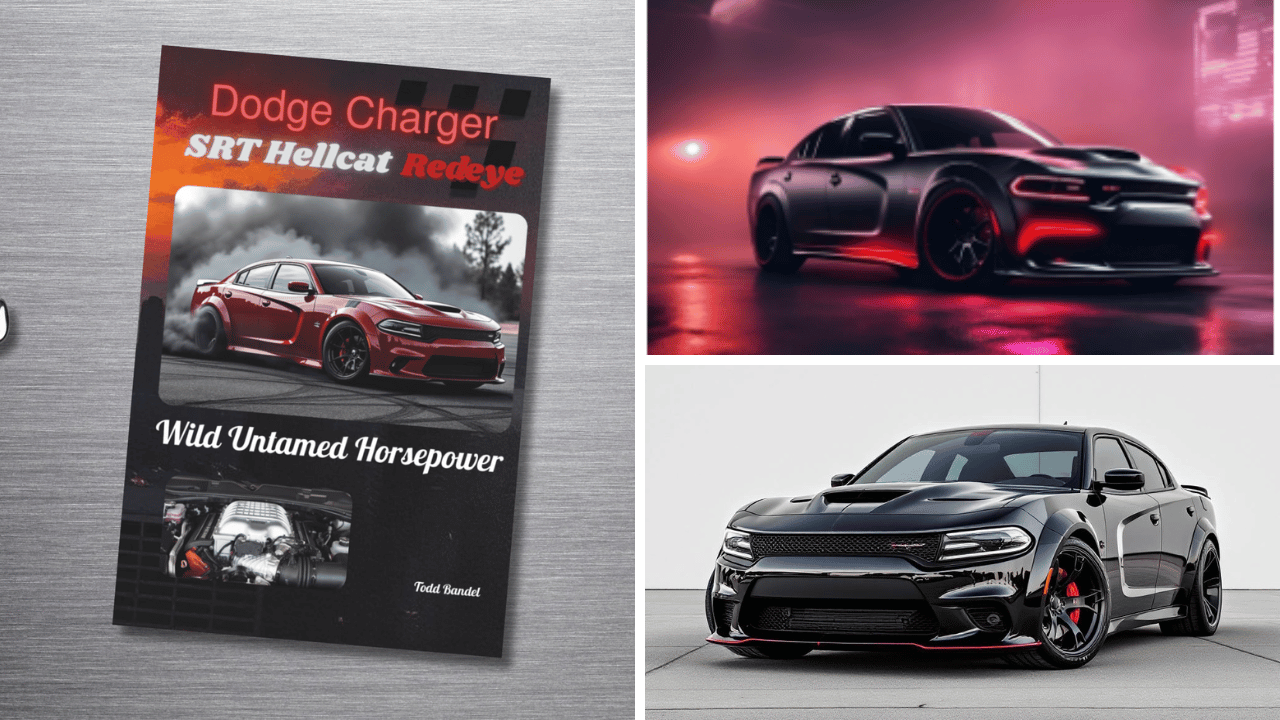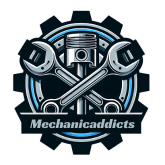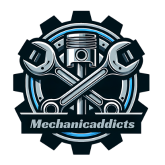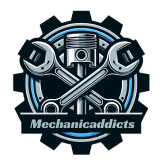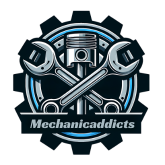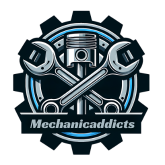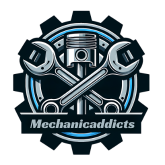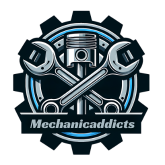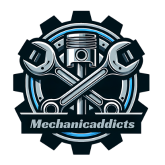Chevy Nova II: Power, Passion, and Performance
The Chevy Nova's history, from compact car to muscle icon. Explore its engines, racing legacy, and why enthusiasts still love this classic.
Welcome to Mechanicaddicts. As an Amazon Associate, we earn from qualifying purchases (at no cost to you) from links found within these pages if you choose to buy something.
Few cars capture the essence of American automotive history quite like the Chevrolet Nova, which has become a symbol of American ingenuity and innovation. From its debut in 1962 as Chevrolet’s answer to the compact car market, the Nova entered a competitive landscape that included key American automakers like AMC, which was known for its unique compact offerings during that era.
As the Nova evolved into a muscle car icon, each model year brought new updates and features, often showcased in video content, further cementing its legacy. Whether you’re a collector looking to restore a classic, an enthusiast drawn to its racing pedigree, or simply someone who appreciates automotive heritage, understanding the Nova’s story reveals why this car continues to command attention decades after its production ceased.
This guide explores Nova’s journey through five distinct generations, its impressive range of powertrains, the passionate community it inspired, and its legendary performance both on the street and at the track, often showcased in videos. The Nova stands alongside other classic Chevrolet models such as the Bel Air, Biscayne, and Chevelle, each contributing to Chevrolet's rich heritage and the broader landscape of collectible American cars.

Chevy II Nova: Power, Passion, and Performance
Discover the roaring transformation of a legend: Chevy II Nova: Chevy's Classic Muscle takes you on an exhilarating journey, revealing how this iconic car emerged from humble beginnings to become a muscle car titan.
The Birth of an Icon: Origins and Development
In the early 1960s, Chevrolet faced a problem. Compact imports were gaining traction with American buyers, and the company needed a response that was both practical and unmistakably Chevrolet. The answer arrived in 1962 as the Chevy II, with the Nova serving as the top trim level. Unlike the rear-engine Corvair, which had sparked controversy, the Chevy II adopted a conventional approach: a front-engine, rear-wheel-drive design with straightforward engineering.
The name “Nova” would eventually become synonymous with the entire line, but in those early days, it represented the premium option. Chevrolet’s strategy was simple but effective. Build a car that could compete with Ford’s Falcon, Plymouth’s Valiant, and AMC’s compact offerings, as well as the Malibu, but do it with the reliability and performance DNA that Chevy buyers expected.
Within Chevrolet’s own lineup, the Nova was positioned as a practical compact. At the same time, the Malibu served as a more upscale or mid-sized alternative, often influenced by its location, and offered special deluxe features, including a master deluxe package, as well as refinement for buyers seeking a step above the Nova.
The timing couldn’t have been better. As the decade progressed and muscle car fever gripped America, the Nova’s simple, lightweight platform proved ideal for high-performance applications. What began as a sensible compact evolved into something far more exciting, often featured in video showcases.

Five Generations, Five Personalities
First Generation (1962-1965): The Foundation
The original Chevy II Nova established the template. Available as a sedan, coupe, convertible, wagon, and sedan delivery, it offered buyers versatility. The sedan delivery was a commercial or cargo-oriented variant, designed specifically for business use and transporting goods. Engine options ranged from an economical four-cylinder to a 283 cubic-inch V8. The styling was clean and understated, a far cry from the flamboyant designs that would define the later muscle car era.
These early Novas weren’t about outright performance. They were about getting Americans where they needed to go reliably and affordably. But beneath that practical exterior lay a platform with serious potential.
Second Generation (1966-1967): The Transformation Begins
The redesign for 1966 brought sharper styling and, more importantly, new performance options. The SS (Super Sport) package transformed the Nova from an economy car to a muscle contender. A key upgrade was the four-barrel carburetor, which, paired with the 327 V8, helped boost output to as much as 350 horsepower. These Novas could genuinely thrill, a testament often highlighted in video content shared by enthusiasts.
This generation marked a turning point. Chevrolet recognized that buyers wanted more than basic transportation. They wanted excitement, and the Nova could deliver.
Third Generation (1968-1974): The Muscle Car Era
If any generation defines the Nova’s performance legacy, it’s this one. The third-gen Nova arrived just as the muscle car wars reached their peak. Chevrolet responded with engines that read like a performance enthusiast’s wish list: the 307, 350, 396, and even the legendary 402 big-block.
The 1970 Nova SS, featuring the 360-horsepower 396 engine, became particularly legendary. Here was a relatively light, compact car with serious muscle under the hood. Quarter-mile times dropped into the low 14-second range, and the Nova earned its place alongside more famous muscle cars, such as the Pontiac GTO, which was a key competitor in the classic muscle car market.
Beyond straight-line speed, these Novas offered something their larger siblings couldn’t: nimble handling. The shorter wheelbase and lighter weight made them surprisingly capable on winding roads, especially when compared to other compact cars of the era, like the Chevrolet Vega.
Today, third-generation Novas are highly sought after in the classic car market, often commanding strong prices at sale and auction.
Fourth Generation (1975-1979): Adapting to Change
The oil crisis and new emissions regulations forced the automotive industry to recalibrate. The fourth-generation Nova reflected this reality. Performance options remained, but horsepower figures dropped as engines were detuned to meet stricter standards.
Despite these challenges, the Nova maintained its appeal. The basic formula, affordable, reliable, and still fun to drive, remained intact. Many enthusiasts today seek out these later models for restoration, recognizing their place in the Nova story. Additionally, the location of a vehicle can significantly influence its price and availability in the current market, making some Novas more desirable or more challenging to find depending on the geographic region.
Fifth Generation (1985-1988): A Different Direction
After a six-year hiatus, Chevrolet revived the Nova name in 1985. This version was essentially a rebadged Toyota Corolla built through the NUMMI joint venture. While competent and reliable, it bore little resemblance to the rear-wheel-drive Novas that came before, and some owners even equipped their models with a tracker for added security. Around the same time, Chevrolet also offered the Cavalier, a compact model that reflected the brand’s approach to the small car market in the 1980s, emphasizing simplicity and practicality.
For purists, the story ended in 1979. But the badge’s return demonstrated the lasting value of the Nova name, even if the execution differed dramatically from the original vision.

Power: The Heart of the Nova
What made the Nova special wasn’t just one engine or configuration. It was the range of choices. Chevrolet understood that different buyers wanted different things, and the Nova’s engine bay could accommodate them all.
This engine versatility was a hallmark of Chevrolet, evident not only in the Nova but also in other models, including commercial vehicles like the Sierra and City Express, a compact cargo van designed for urban delivery and city-based logistics.
Economy to Excitement
At the entry level, four-cylinder and inline-six engines provided fuel efficiency and basic performance. These were perfect for buyers who prioritized practicality. This practical approach is evident in modern compact models like the Chevrolet Aveo and Spark, which continue Chevrolet’s tradition of offering affordable and efficient vehicles for budget-conscious drivers. But step up the option sheet, and everything changed.
The small-block V8s,the 283, 307, and especially the 350,offered the perfect balance of performance and reliability. These engines were bulletproof, easy to maintain, and responded beautifully to modifications, along with various transmission options. The 350, in particular, became a favorite among enthusiasts for its combination of power and durability.
Big-Block Thunder
For those who wanted maximum performance, Chevrolet offered big-block options, along with various transmission choices, that completely transformed the Nova’s character. The 396 (actually displacing 402 cubic inches in later years) delivered tire-shredding torque and unforgettable exhaust notes.
These big-block Novas were serious performance machines. They could embarrass cars costing far more money, and they did so with a working-class attitude that made them accessible to enthusiasts who couldn’t afford Corvettes or Camaros.
Chevrolet’s tradition of offering powerful engines continues today in models like the Blazer SUV and Colorado pickup.

The Tuner's Dream
Perhaps the Nova’s greatest strength was its adaptability. The simple, robust platform accepted modifications with ease, including upgrades to special deluxe features. Hot rodders discovered they could swap in even larger engines, upgrade suspension components, and transform Novas into custom street machines that reflected their own vision.
This flexibility explains why Novas remain popular in the custom car scene today. You can build a Nova to suit virtually any performance goal, from a period-correct muscle car restoration to a modern pro-touring machine with contemporary suspension and brakes. Some owners also equip their custom Novas with modern features like a tracker for added security.
Reliability and Durability: Built to Last
When it comes to reliability and durability, the Chevrolet Nova stands out as a true workhorse among classic cars. From its earliest days as the Chevy II, this model was engineered with simplicity and longevity in mind,a philosophy that has helped countless Novas survive decades of daily driving, spirited cruising, and even the rigors of the drag strip.
The Nova’s reputation for dependability starts with its robust engine lineup. Whether equipped with the tried-and-true small-block V8 or the efficient inline-six, the Nova’s powerplants were designed for longevity and ease of maintenance.
Owners often praise the car’s ability to rack up high mileage with minimal fuss, a testament to Chevrolet’s focus on quality and straightforward engineering. The Nova’s sturdy construction, from its solid chassis to its durable body panels, means these cars can withstand the test of time, making them a favorite for restoration projects and custom builds alike, regardless of their location.
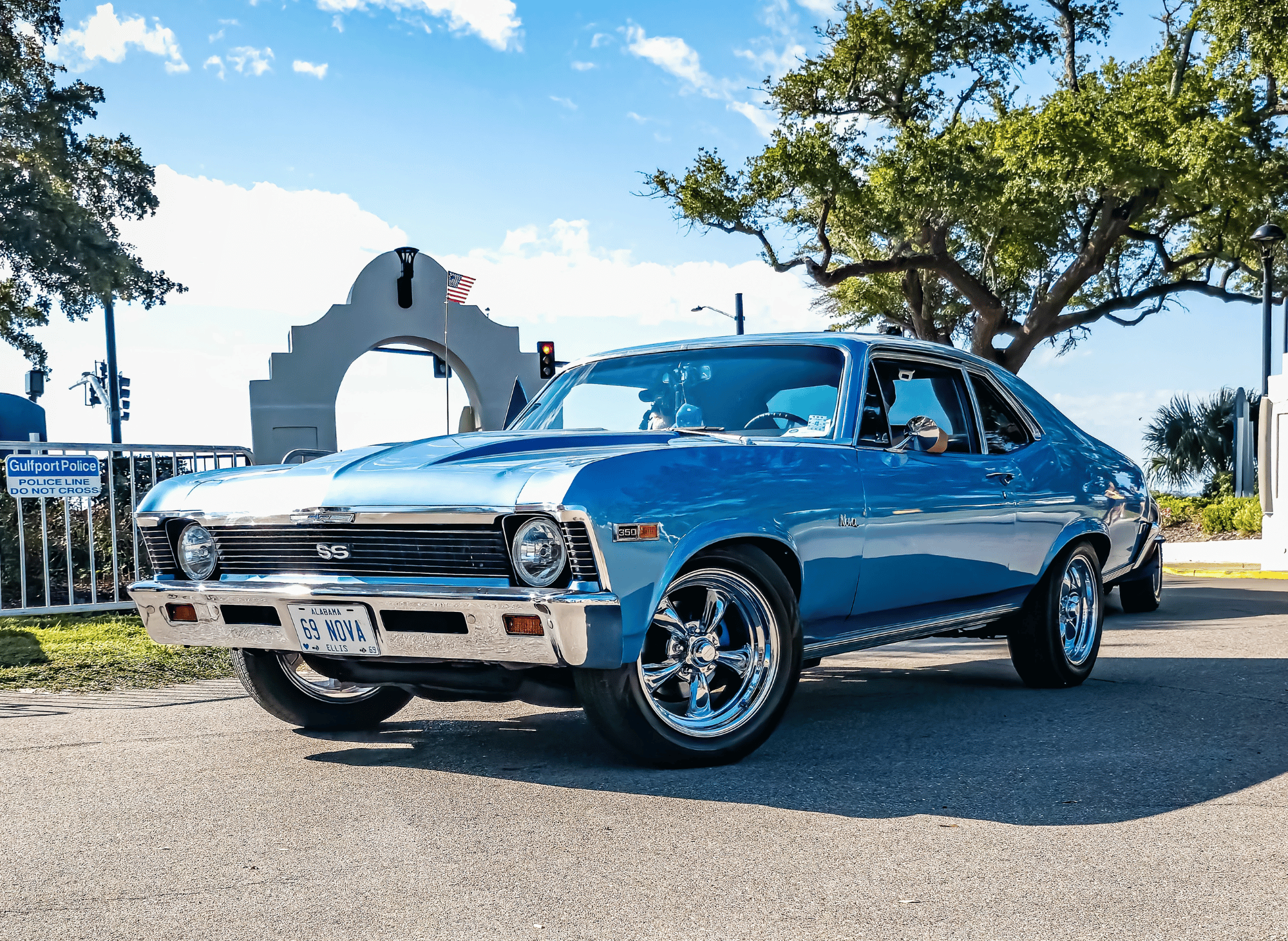
A key advancement in the Nova’s evolution was the introduction of standard front disc brakes in the 1970s. This upgrade not only improved stopping power and safety but also reduced wear and tear on the braking system, further enhancing the car’s reputation for reliability.
The fourth generation, produced from 1975 to 1979, brought additional improvements, including more modern fuel injection systems. These updates made the Nova even more dependable, keeping it competitive with other Chevrolet models, such as the Monte Carlo, El Camino, and Camaro, as well as rivals from Pontiac, Chrysler, and Buick.
The Nova’s straightforward design, free from the complex electronics and finicky features found in some contemporaries, means fewer things can go wrong. This simplicity is a significant reason why many Novas remain on the road today and why they’re so popular among enthusiasts seeking a low-maintenance classic. Dealerships like Thiel Motor Sales Inc. have long recognized the Nova’s reliability and durability as key selling points, often highlighting these traits to buyers searching for a quality vintage car.

General Motors’ legacy of building reliable vehicles is evident in the Nova, and its influence can be seen in later models like the Silverado EV, Bolt EV, Caprice Classic, Cruze, and Equinox. Features such as disc brakes and fuel injection, once innovative in the Nova, have become standard across the Chevrolet lineup, from the Corvette and Impala to the Tahoe and Trailblazer.
For collectors and restorers, the Nova’s reputation for durability means that original and restored examples are highly sought after. Many owners report driving their Novas for decades with only routine maintenance, a rare feat among classic cars. Whether you’re searching for a Nova SS, a Super Sport coupe, or a fourth-generation sedan, you’ll find that these cars deliver quality and reliability that stand the test of time.
In a world where many classic cars require constant attention, the Chevrolet Nova’s blend of rugged engineering, practical design, and proven components makes it a standout. It’s no wonder that, decade after decade, the Nova continues to earn the loyalty of enthusiasts, collectors, and anyone who values a car that’s truly built to last.
Passion: The Nova Community
Cars become classics not just because of their specifications, but because of the people who love them. The Nova has inspired a devoted following that spans generations. Many enthusiasts utilize online search tools and resources to locate Novas, find rare parts, and discover community events.
Stories from the Street
Ask any Nova owner about their car, and you’ll hear stories. Stories about buying a Nova as a first car and never wanting to let it go. Stories about fathers and sons bonding over restorations. Stories about that first burnout, that first race, that moment when the car became more than transportation.
One enthusiast recalls finding a 1969 Nova SS in a barn, covered in dust and neglected for decades. The restoration took three years, countless hours, and more money than he cares to admit. But when he fired up that 350 for the first time after the rebuild, he knew every moment was worth it.
Another owner describes teaching his daughter to drive in a restored 1973 Nova. The manual transmission taught patience and coordination. The car’s lack of modern safety features taught respect for the machine. Now she’s saving for her own Nova, continuing the tradition.
Many Nova owners also share their restoration progress through video updates and online content, allowing the community to follow each step of their journey.
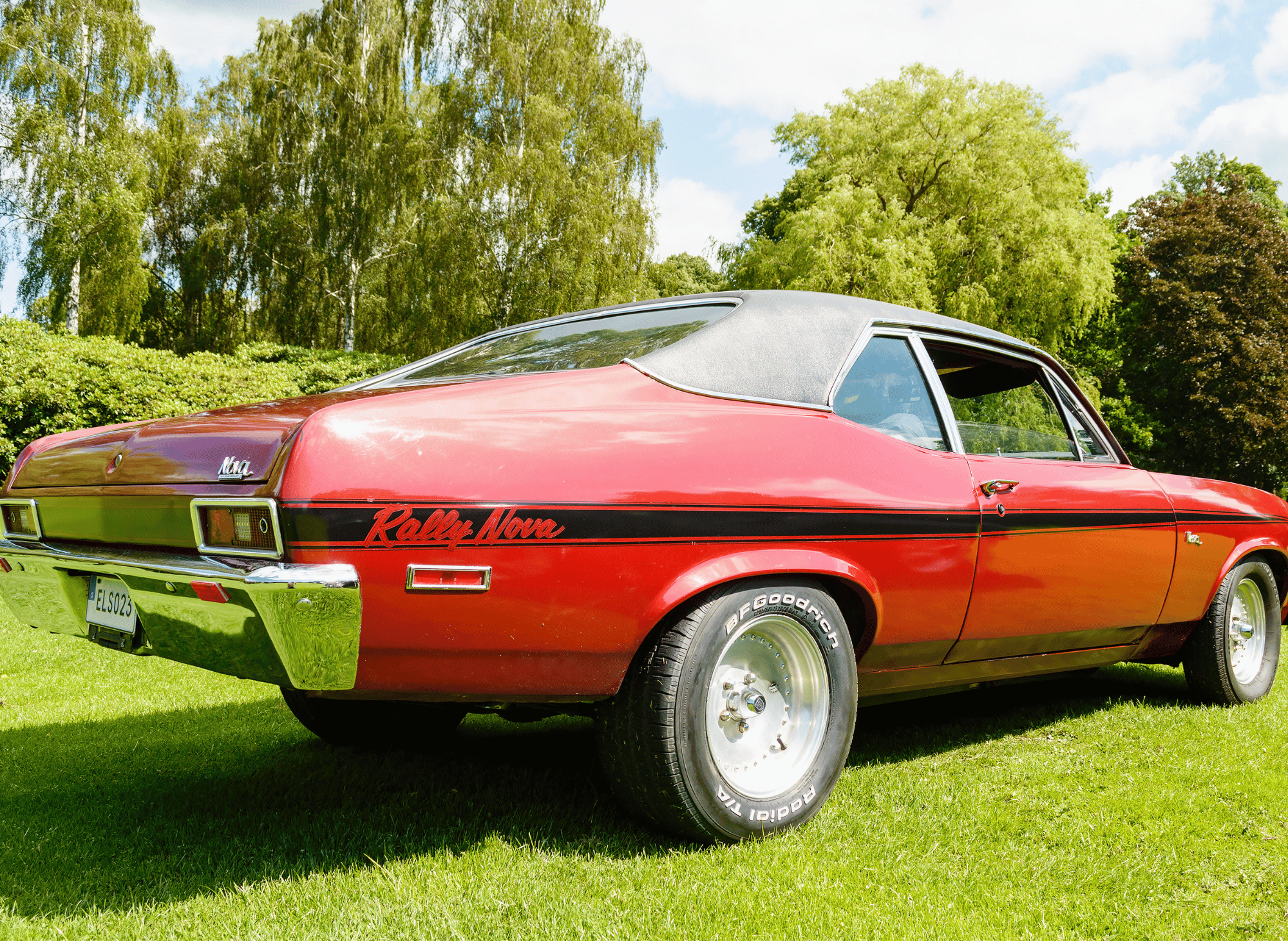
Car Shows and Cruises
The Nova community thrives at car shows across the country. Walk through any classic car event, and you’ll find Novas ranging from bone-stock survivors to wildly modified customs. These events often also showcase other Chevrolet models like the Astro van and HHR, reflecting the brand’s diverse history and lineup. Owners gather to compare notes, share tips, and celebrate their shared appreciation for these cars.
Online forums and social media groups have expanded the community even further. Enthusiasts from around the world connect to discuss restoration techniques, troubleshoot problems, and share photos of their builds. The knowledge sharing within the Nova community is remarkable; experienced builders readily help newcomers navigate their first restorations.
The Next Generation
What’s particularly encouraging is seeing younger enthusiasts discovering Novas. These cars offer an accessible entry point into classic car ownership. They’re not as expensive as Camaros or Chevelles, but they offer similar performance potential and the same fundamental V8, rear-wheel-drive experience.
Young builders appreciate the Nova’s simplicity. No complex electronics, no computer diagnostics required. Just mechanical components you can see, touch, and understand. In an age of increasingly complicated vehicles, there’s something deeply satisfying about working on a car where you can actually fix things yourself. Today, Chevrolet continues this tradition of accessibility with models like the Trax, a modern entry-level vehicle designed for new drivers seeking affordability and practicality.

Performance: From Street to Strip
The Nova’s performance legacy extends far beyond stoplight encounters. These cars earned genuine racing credentials across multiple disciplines.
Chevrolet’s performance legacy continues with unique models like the SSR.
Drag Racing Dominance
Drag strips became the Nova's natural habitat. The combination of lightweight, potent engines and solid rear axles made them competitive in both stock and modified classes. Throughout the late 1960s and early 1970s, Novas regularly appeared in winner's circles.
Professional racers recognized the platform's potential. The Nova's compact dimensions provided better weight transfer during launches compared to larger cars. This translated to quicker elapsed times and faster trap speeds. In Super Stock and Modified classes, Novas became formidable competitors.
Even today, Novas dominate specific drag racing categories. Walk through the pits at any NHRA event, and you'll see highly modified Novas running in the sevens and eighths. These cars bear little resemblance to their street-going ancestors, but they prove the platform's enduring performance potential.
Road Racing Success
While less famous for road racing than drag racing, Novas also competed successfully in road course events. The short wheelbase and relatively low weight gave them advantages in cornering. With proper suspension upgrades, Novas could hold their own against purpose-built sports cars.
Trans-Am racing in the early 1970s featured Novas battling Camaros, Mustangs, and other pony cars. Though not as dominant as in drag racing, Novas demonstrated they could turn as well as they could accelerate.
The Modern Pro-Touring Movement
Today's pro-touring scene embraces Novas enthusiastically. Builders combine classic aesthetics with modern performance components: coilover suspension, disc brakes, fuel injection, and overdrive transmissions. The result is a car that looks period-correct but drives like something built this decade.
These builds demonstrate the Nova's versatility. The same basic platform that worked for drag racing, road racing, and street cruising adapts beautifully to contemporary performance standards. Modern Novas can carve canyons, compete competitively in autocross, and still look stunning at car shows.

Customization and Restoration
The Nova’s popularity among restorers and modifiers stems from several practical advantages. Parts availability remains excellent, with reproduction components covering virtually every aspect of the car. Multiple vendors specialize in Nova parts, making restoration projects far more feasible than with many other classics. Similarly, the Chevrolet Nomad is another classic model highly prized by collectors and customizers for its unique design, historical significance, and status as a nostalgic collectible, much like the Avalanche.
The aftermarket support extends beyond restoration parts. Want to modernize your Nova with electronic fuel injection? Multiple kits are available. Prefer a modern suspension setup? Companies offer complete coilover conversions. Looking for more power? The small-block Chevy has virtually limitless performance parts available.
This extensive support network means you can build a Nova to suit any budget and any goal. A modest restoration might cost $15,000-25,000 in parts, while a high-end pro-touring build could easily exceed $100,000, similar to other models like the Avalanche. The choice is yours, and either path will result in a rewarding car.
The restoration process itself becomes a journey. Many owners spend years methodically rebuilding their Novas, learning new skills along the way. Bodywork, painting, mechanical rebuilding, and upholstery each offer opportunities for personal growth and satisfaction.
Why the Chevy II Nova Endures
More than four decades after the last classic Nova was built, these cars remain relevant. They appear regularly at auctions, in magazines, on YouTube builds, and at car shows worldwide, often highlighting their potential for sale. What explains this lasting appeal?
Part of it is accessibility. Novas remain relatively affordable compared to other muscle cars. A decent driver-quality Nova can still be found for reasonable money, making classic car ownership attainable for enthusiasts who can't afford six-figure collectibles.
The simplicity matters too. Modern cars offer tremendous performance and capability, but they're complex and challenging to modify. The Nova represents a simpler time when cars were mechanical rather than electronic, when understanding your vehicle didn't require a computer science degree.
There's also the emotional connection. For many baby boomers, Novas were first cars, dream cars, or the cars they wished they'd kept. Nostalgia drives a strong interest in these models, and those memories create powerful motivation for preservation and restoration.
Finally, there's the simple fact that Novas are excellent cars. They look good, they sound great, they're fun to drive, and they offer real performance. These aren't trailer queens or museum pieces; they're cars meant to be driven and enjoyed.
Looking Forward: The Chevrolet Nova's Future
The classic car market continually evolves, but the Nova's position appears secure. Values have appreciated steadily over the past two decades, particularly for desirable models like SS versions and big-block cars. This upward trend suggests continued strong interest.
The growing pro-touring movement ensures Novas remain relevant to younger enthusiasts. These builds appeal to people who want classic styling combined with modern performance and reliability. As this segment grows, Nova prices and popularity, similar to vehicles like the Silverado, likely will too.
Restoration quality continues improving. Modern techniques and better reproduction parts mean restored Novas often exceed factory build quality. This raises overall standards and helps preserve these cars for future generations.
The Nova community shows no signs of slowing down. New owners discover these cars constantly, attracted by the combination of style, performance, and affordability. Car clubs dedicated to Novas remain active and welcoming to newcomers.

The Enduring Legacy of an American Classic: the Chevy Nova SS
The Chevy ii Nova represents a unique chapter in American automotive history. It bridged the gap between practical transportation and high performance, offering buyers a car that could serve as a daily driver or a weekend warrior. It's five generations chronicled the evolution of American automotive tastes, from the practical 1960s through the muscle car era and into the challenges of the 1970s.
The Nova's power options ranged from sensible to spectacular, giving buyers tremendous choice. Its racing success demonstrated that performance wasn't limited to larger, more expensive cars. The passionate community that surrounds these cars ensures their stories will continue being told, especially among Chevrolet enthusiasts.
For anyone considering entering the classic car hobby, the Nova offers an excellent starting point. Parts support is strong, knowledge resources are abundant, and the cars themselves are fundamentally sound. Whether you're interested in a period-correct restoration, a modern pro-touring build, or anything in between, the Nova's versatility accommodates your vision.
The Chevy II Nova is more than just a car. It's a cultural touchstone, a performance icon, and a testament to straightforward American engineering. From suburban driveways to drag strips, from car shows to canyon roads, Novas continue to do what they've always done: delivering honest performance with working-class swagger.
That legacy shows no signs of fading. As long as enthusiasts value V8 power, rear-wheel-drive thrills, and the satisfaction of driving a true classic, the Nova will have admirers. Power, passion, and performance, the Nova delivered all three then, and it still provides them.
Thank you for reading!
Your friend,
Todd
#ChevyNova #NovaNation #ClassicChevy #MuscleCar #AmericanMuscle #VintageVibes #Restomod #CarCulture #V8Power #StreetMachine
🚗 🏁 🔧 💨 🔥🏎️ 🛠️ 👀
Amazon Prime offers a wide range of products designed to cater to diverse customer needs, all with the added benefit of fast, reliable delivery. From household essentials and groceries to electronics, clothing, and entertainment, Prime members get access to exclusive deals and discounts across various categories.
Additionally, Prime membership includes access to services like Prime Video for streaming movies and TV shows, Amazon Music for ad-free music, and Prime Reading for eBooks and magazines. This comprehensive suite of benefits makes Amazon Prime a convenient and value-packed option for millions of customers worldwide.
- Prime for you, adult
- Free 30-day trial of Prime
- All of Prime, half the price.
- Prime Video
- Wedding Registry
- Kindle Unlimited
- Amazon Music
